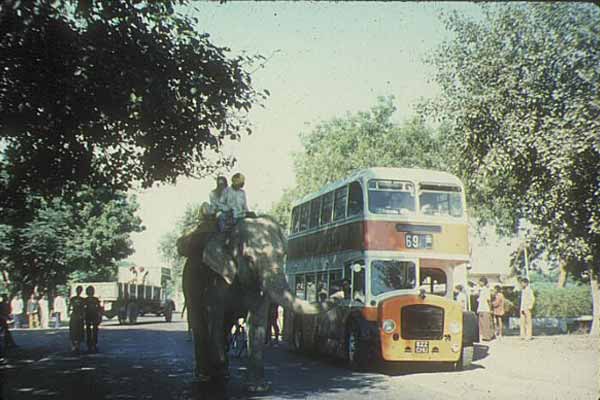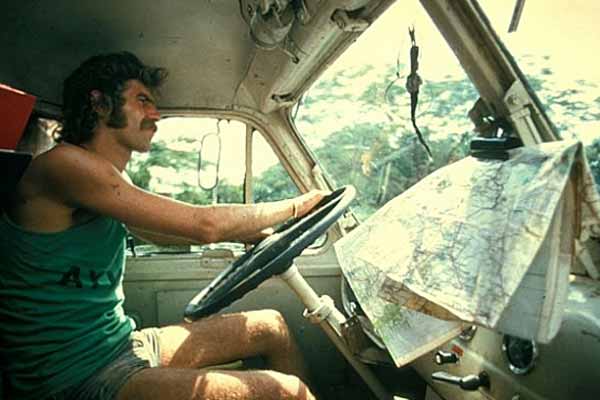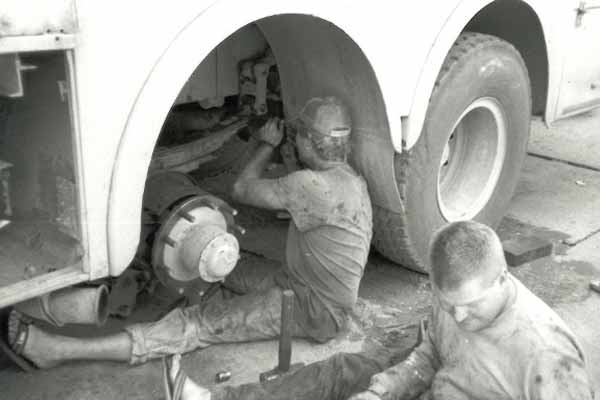A Review of What Gap Years Are About and Where They Came From- Written by: Macca Sherifi
The history of the gap year is long and rich, and gap years have come a long way since they first started in the 1960s. The gap year we know today is very different to what it once was, but it’s clear where it came from.
Today, hundreds of thousands of people are taking gap years all over the world. Some last more than a year, some less, but they’re all about taking a break that is much more than a holiday. Many travel to places such as Australia, New Zealand and Thailand for months on end, travelling in relative comfort and ease, but its taken a long time to get where we are today, and gap years have come a long way.
A gap year can be anywhere, for any length of time, doing anything you want. Though almost all gappers are looking for an enriching experience, there are lots of different ways to achieve it. You can build an orphanage in Colombia; teach English as a foreign language in Japan; trek through the Himalayas in Nepal or travel around the ‘banana pancake trail’ in South East Asia. The only thing that’s limiting you is your ambition and imagination.
However, it wasn’t always like this and there’s a clear gap year history. Many things have changed since gap years first became a recognisable phenomenon in the 1960s. These were the years when the young generation shook off the post-war austerity and grew the confidence to ask if their lives had to be the same as their parents’. Gap years were part of this cultural and social revolution, and if there’s one thing that has remained the same throughout the ages it’s the essence of travelling.
A gap year is about new challenges and new experiences, seeing new countries and meeting new people. It’s about living life to the full and realising there’s a world of opportunity out there just waiting to be explored.
But the question is, when did it all start?
Gap Years Are Born
The 60’s was a time of freedom of speech and independence, a time of cultural and social revolution, and the decade that gap years were first made popular. Arguably gap years started as cultural exchanges, discussed among governments as a useful tool to create global awareness and understanding in an attempt to prevent further world wars from occurring. Little did they know they were creating the gap year as well.
A richer spiritual life was what many of these travellers were looking for and they initially set their sights on India, a country that was open to different cultures and change. People in their droves trod the hippie trail from Delhi down to Goa, setting a precedence of backpacking for years to come, on a route that is still followed today.
In 1967, Nicholas Maclean-Bristol set up the company Project Trust and sent three volunteers to Addis Ababa in Ethiopia. According to Project Trust “the young volunteers would of course assist in the building of a developing nation but, at such an impressionable age, they would also be learning about Ethiopia, developing their own skills and learning to live independently at the same time. Forty years on and those aims remain unchanged.” The desire to do something to help others abroad had been there before but now there was a straightforward way to achieve it and a volunteering ethos was born.
 The Champions of Gap Years
The Champions of Gap Years
As the 60s turned into the 70s, gap years continued to grow in popularity. Flights were still expensive so gappers turned to buses instead. The mode of transport didn’t matter; it was all about the journey, not the destination.
In 1973, a young London-based Australian, Graham ‘Skroo’ Turner bought a double-decker bus, sold tickets and drove his paying customers to Kathmandu.
As anyone who’s read Rory Maclean’s book Magic Bus will know, the first trips were epic. They had nothing more than enough money for fuel and the shared desire for the unknown. They slowly wound their way through countries like Turkey, Iran and India, truly experiencing what it meant to travel. Turner went on to found the highly successful Flight Centre and Topdeck Travel companies, two companies that are still booming today.
In the same year, Tony Wheeler, and his then girlfriend (now wife), Maureen, embarked on an overland trip to Asia. From it, they drew inspiration to write a travel guidebook, Across Asia on the Cheap. It became the first title for the new publisher Lonely Planet. Tony and Maureen wrote it, published it and sold it. At the time they just wanted to pass on their experiences, to give other travellers advice and information. Today, Lonely Planet is the world’s largest travel guidebook publisher with over 500 titles, and it all started on a gap year.
In 1977, GAP Activity Projects (now Lattitude Global Volunteering), a UK organization, set-up volunteer placements for students who wanted to travel between school and university. This was a continuation of what had been started by Project Trust ten years before. The classic between-school-and-university gap years began to grow.
In 1978, the Prince of Wales and Colonel John Blashford-Snell began what is now known as Raleigh International by launching Operation Drake, an expeditionary voyage following Sir Francis Drake’s route around the world. In essence, this was the first round the world trip, and combining a gap year with a round the world trips has grown in popularity ever since.
With a tour company offering cheap flights, a volunteering company and a guidebook, the independent travel market was born. The gap year foundations were firmly in place. All that was needed was the gappers, and what followed was an explosion in the gap year industry.
The Explosion of Gap Years
Gap years continued to grow throughout the 80s and early 90s and as time went on the history of the gap year started to change. Backpacking was the popular thing to do. It was hip. It was cool. Independent travel and backpacking was getting easier, less risky, and most importantly, cheaper. Demand grew, prices for air travel fell and all of a sudden taking a gap year had become a rite of passage for pre-university students in the UK.
As the industry grew people who’d done their own gap years were coming back and starting their own businesses. One such person was Tom Griffiths.
Much like Tony Wheeler, Tom was buzzing with excitement when he got back from his second gap year. Enthused, all he wanted to do was share his experiences and to give advice to the masses on backpacking and travelling; to inspire people to follow their dreams much like he had done. He realised that the gap year needed to be updated and brought into the new millennium on a new platform, so, in 1998, he and business partner Peter Pedrick founded gapyear.com.
In July 2005, the economic and business forecasters Mintel valued the gap year travel industry globally at £5bn a year and identified it as one of the fastest growing sectors of the travel industry. Not only were gap years here but they were here to stay.
With an online platform tapping into technology that was increasingly accessible, gap years grew from strength to strength, as did the companies around it.
The Future of Gap Years
Today, going on a gap year is as popular and as common as going on a two-week holiday. It doesn’t matter what type of gap year you’re taking, all that matters is you’re taking one. The point is gap years are no longer just for the young and rich. Backpacking and travelling is accessible to all ages, from all backgrounds, and there’s never been a better time to travel.
Going to university is becoming less of a clear-cut benefit, working lives are getting more complex and more and more of us are finding our work involves international cooperation or competition. In conjunction with that, what was once a luxury only affordable to British and Commonwealth youngsters is now affordable to all. More and more people from all over the world are taking gap years, especially from the United States.
Taking a gap year now is seen as an asset in the work place and employers are actively encouraging people to take gap years to earn skills and ‘life experience’. They want confidence and the ability to communicate across cultures. In a survey for gapyear.com in 2011, 63% of UK HR professionals said that a constructive gap year spent volunteering or gaining work experience overseas made a job application stand out. In the future it will be less a question of whether you can afford to have a gap year and more whether you can afford not to have one.
But even more important than finding a job is finding the right way to live. We may smile now when we think of those bearded guys and beaded girls catching the bus to India, but they wanted a genuine experience. They wanted to grow as a group and as individuals.
People will always want to test and challenge themselves, to gain new experiences, and that’s exactly that gap years are all about.
People will forever want to travel, to experience, and to share… just make sure you do too…

Co-Founder of the OFT Blog. Mother of 2 who disguises as a 9 to 5 finance professional on most days. She loves to travel, is an amateur website builder and cook. And given her day job, she loves travel planning and saving money. Follow along!




 The Champions of Gap Years
The Champions of Gap Years




